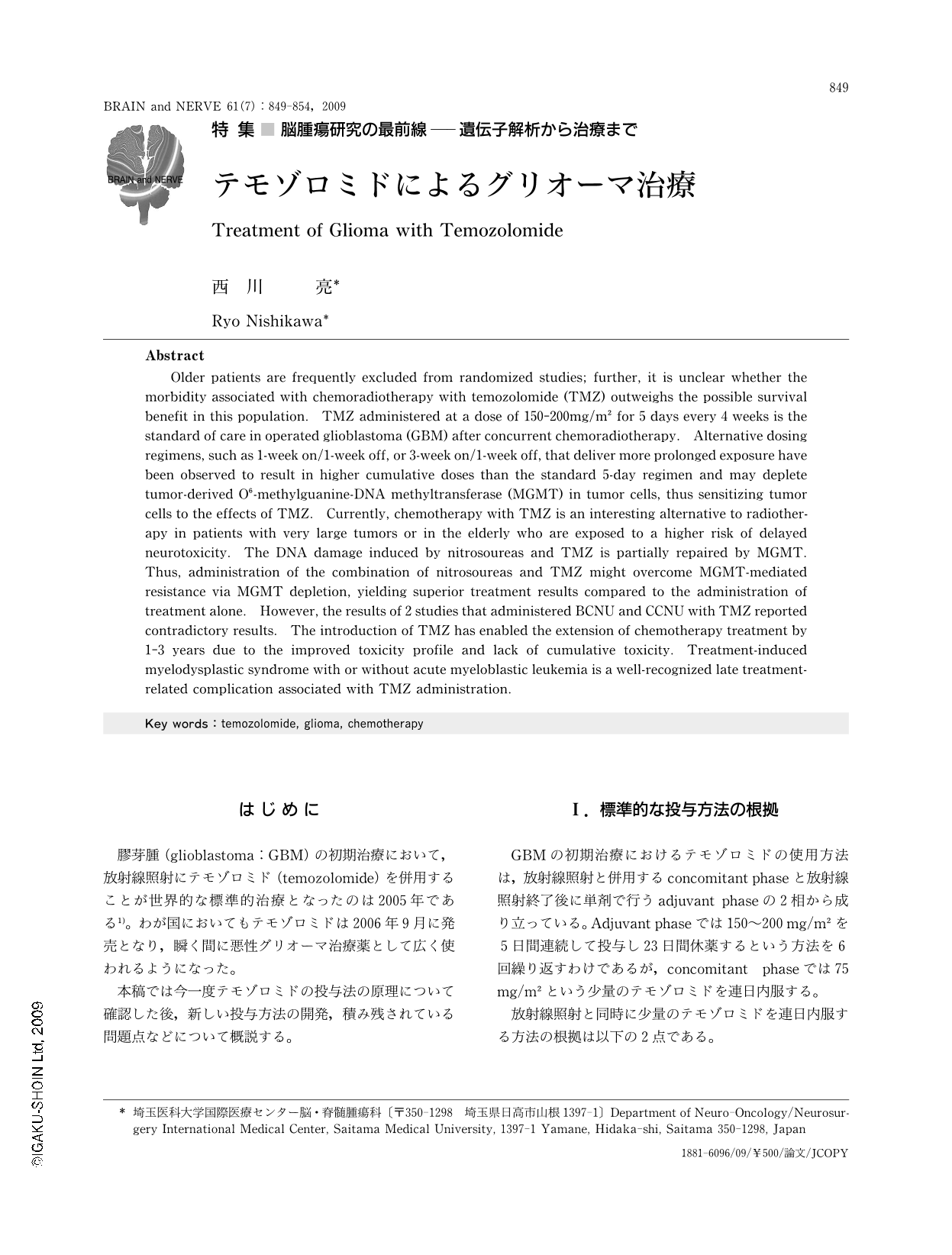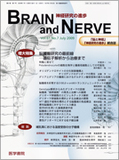Japanese
English
- 有料閲覧
- Abstract 文献概要
- 1ページ目 Look Inside
- 参考文献 Reference
はじめに
膠芽腫(glioblastoma:GBM)の初期治療において,放射線照射にテモゾロミド(temozolomide)を併用することが世界的な標準的治療となったのは2005年である1)。わが国においてもテモゾロミドは2006年9月に発売となり,瞬く間に悪性グリオーマ治療薬として広く使われるようになった。
本稿では今一度テモゾロミドの投与法の原理について確認した後,新しい投与方法の開発,積み残されている問題点などについて概説する。
Abstract
Older patients are frequently excluded from randomized studies; further,it is unclear whether the morbidity associated with chemoradiotherapy with temozolomide (TMZ) outweighs the possible survival benefit in this population. TMZ administered at a dose of 150-200mg/m2 for 5 days every 4 weeks is the standard of care in operated glioblastoma (GBM) after concurrent chemoradiotherapy. Alternative dosing regimens,such as 1-week on/1-week off,or 3-week on/1-week off,that deliver more prolonged exposure have been observed to result in higher cumulative doses than the standard 5-day regimen and may deplete tumor-derived O6-methylguanine-DNA methyltransferase (MGMT) in tumor cells,thus sensitizing tumor cells to the effects of TMZ. Currently,chemotherapy with TMZ is an interesting alternative to radiotherapy in patients with very large tumors or in the elderly who are exposed to a higher risk of delayed neurotoxicity. The DNA damage induced by nitrosoureas and TMZ is partially repaired by MGMT. Thus,administration of the combination of nitrosoureas and TMZ might overcome MGMT-mediated resistance via MGMT depletion,yielding superior treatment results compared to the administration of treatment alone. However,the results of 2 studies that administered BCNU and CCNU with TMZ reported contradictory results. The introduction of TMZ has enabled the extension of chemotherapy treatment by 1-3 years due to the improved toxicity profile and lack of cumulative toxicity. Treatment-induced myelodysplastic syndrome with or without acute myeloblastic leukemia is a well-recognized late treatment-related complication associated with TMZ administration.

Copyright © 2009, Igaku-Shoin Ltd. All rights reserved.


